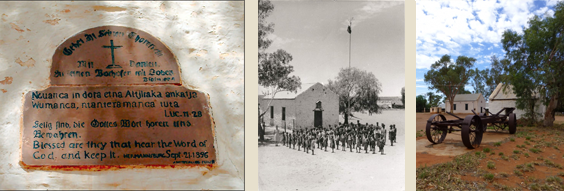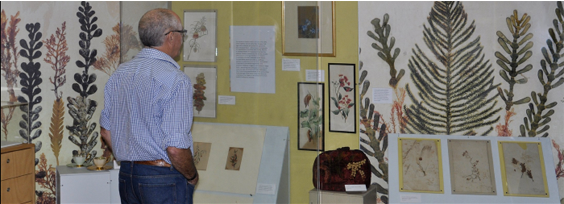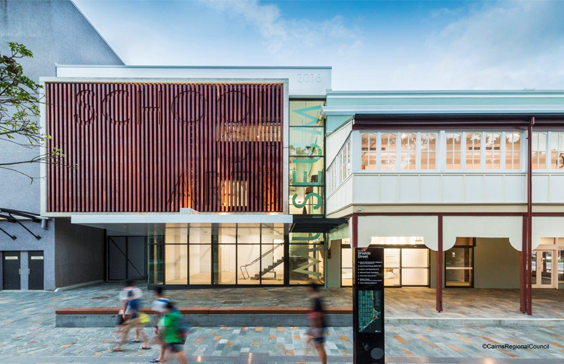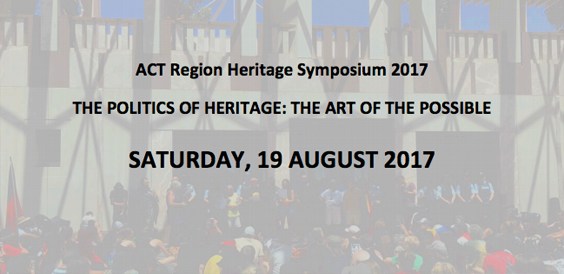|
Benefits of Copyright Amendment Bill
|
|
|
On 15 June this year, Parliament passed the Copyright Amendment (Disability Access and Other Measures) Bill, which included a number of important and overdue amendments that will dramatically free up how Australians can access and use copyright material.
|
|
There are benefits for schools, through changes to the education statutory licences. There are benefits for the blind and vision impaired, with libraries able to increase the volume of accessible materials available. There are benefits for collecting institutions, with the harmonisation and modernisation of preservation exceptions for copyright material, and there are changes that will directly benefit historical societies.
The main benefit for FAHS societies is the end to antiquated provisions in the Australian Copyright Act which meant that unpublished materials were in perpetual copyright. As a result of the changes, millions of vintage manuscripts including letters and diaries held by museums, libraries, archives and historical societies, and thousands of theses at universities, where the creator of copyright material cannot be identified, will be simultaneously freed into the public domain on 1 January 2019.
If you hold these types of materials, created 70 years ago or more by an unidentifiable creator (ie before 1 January 1949), at the beginning of 2019 they will be out of copyright. As just one of the uses, you will be free to digitise the documents or images and put them up on your website. Then, on 1 January 2020, such materials created before 1 January 1950 will come out of copyright and so on, year after year.
If the author of the published materials is known, then the material will come out of copyright after the life of the author plus 70 years (similar to published material). However, if the material is made public (ie made available to the public) within 50 years of its making, copyright subsist from the date the material was first made public plus 70 years.
For more information:
http://www.aph.gov.au/Parliamentary_Business/Bills_Legislation/Bills_Search_Results/Result?bId=r5832
|
|
Jessie Lloyd has been unearthing songs from the settlements and missions where Aboriginal and Torres Strait Islander people lived, her Mission Songs Project adds another dimension to Indigenous Australia's rich cultural history.
Image: Session with Elder Cedric Geia in Halfix, QLD.
|
|
.The Mission Songs Project is an initiative to revive and present a rare collection of early Australian Indigenous contemporary songs composed and performed between 1900 and 1999. The project will faithfully explore the musical journey of Indigenous music, as the connection between traditional and contemporary reveals the continuation of cultural practice and oral traditions into the 21st century.
These songs, largely hidden from the outside world, offer a unique window of life on the Christian missions, native settlements and the fringes of townships where Aboriginal and Islander people were displaced.
The Mission Songs Project is supported by a current Creative Fellowship through the State Library of Victoria. Archie Roach AM will support the project as senior advisor.
Jessie Lloyd is also the 2017 recipient of the National Folk Fellowship, offered annually by the National Library of Australia and National Folk Festival. Lloyd has had valuable access to oral histories and folk recordings held in the archives. But prior to this, the North Queensland-born, Melbourne-based musician spent years travelling the length and breadth of the country to speak with senior Indigenous songmen and songwomen — including Archie Roach and Roger Knox — hear their stories, and collect their songs.
http://mpegmedia.abc.net.au/rn/podcast/2017/02/aye_20170225.mp3
Source: http://www.abc.net.au/news/2017-07-02/jessie-lloyd-mission-to-reclaim-indigenous-heritage-through-song/8667454
|
|
|
Featured Historical Society - Hermannsburg Historical Society
|
|
|
|
The Hermannsburg Historical Society was set up as an association in 1985 and looks after the Hermannsburg Historic Precinct - the last surviving mission developed by the Hermmansburg Missionary Society.
|
|
Hermannsburg Mission was established by German Lutheran missionaries in 1877. They started to interact very soon with the local Aboriginal people, the Aranda (in recent decades written as Western Arrarnta). The school was the first initiative to succeed. Later on a church was planted.
The settlement became a peaceful community, and at times was a refuge because of conflict. Mission staff and local people worked together in the settlement, in those pioneer years.
The mission was able to provide significant support to indigenous folk in times of widespread and severe drought, at the end of the 1920s and 1930s. Then Albert Namatjira and others learnt to paint in watercolours, in an attempt to earn money and make a living.
The first missionaries left, but Carl Strehlow and then F W Albrecht provided good leadership and the settlement gained stability. Later on Carl's son, Ted (T G H) Strehlow, became involved in translation work, of the Bible and hymns.
In 1982 land title of the Mission lease was handed back to the Western Arrarnta landowners.
Following that, in 1985, the Historical Society was set up as an association. After that the Historical Society has taken responsibility for the precinct buildings, displays and stories. Mr Gus Williams was one of the main people involved with this development. His grandson Nicholas is the current chairman of the Historical Society.

The Hermannsburg Historical Society holds the lease on the precinct area, which comprises 16 significant buildings. There is a museum, art gallery, and the Kata Anga Tea Rooms for people to view, amongst other attractions. There is a brochure handed out at the front desk, so that tours are largely self-guided with those in hand. The managers are currently developing audio guides in several foreign languages, to assist overseas visitors.
Finke River Mission Services acts as the day-to-day managers of the business. The Historical Society advises them, and is accountable for the financial affairs of the precinct.
The structures and landscaping reflect the Lutheran emphases in mission life: education, Christian faith, work and self-sufficiency. A village square is the central space, with places and buildings allotted for school, church, distribution of rations, dormitory accommodation for children, meals for school children, a medical dispensary, and places of industry.
The Hermannsburg Historic Precinct was included in the National Heritage list in April 2006. There are a number of buildings still standing that were erected before 1900. As a heritage listed place, any changes to the site need to be developed through the Historical Society, who then gain approval for them through the Heritage Branch.

Images L to R: Church plaque in English and Arrarnta; students lined up in rows outside the old school; Heritage Precinct.
David Roennfeldt, their public officer, outlined how the society is currently working positively, with good relationships and capability. Their constitution has recently been updated.
The precinct attracts over 10,000 visitors a year. It is envisaged that numbers will increase, as the bitumen loop road was completed and opened in 2017, allowing people to drive in 2WD vehicles to Hermannsburg from Glen Helen in the north.
Hermannsburg is a major heritage destination in central Australia, show-casing European interaction with Aboriginal people. Hermannsburg and the precinct are easily accessed by visitors. Bitumen road permits a relaxed drive from Alice Springs, or along the new bitumen going west and then to Hermannsburg from Glen Helen and Ormiston.
There is an entry fee, which then allows visitors to freely view and enjoy the historic site according to their own timetable. Food and drink are available, including the tradition apple strudel and scones. Original watercolours can be seen in the art gallery, and reproductions of Albert Namatjira's works can be purchased. CDs, books and contemporary artwork are also available for purchase.
Visitor information, as at 1st Aug. 2017:
The precinct is open all year round, closing only on Good Friday and Christmas Day.
Open Monday - Sunday 9 am - 5 pm.
Kata Anga Tea Rooms open 9 am - 4 pm.
Entry: adults $11, concession card $9, children free. Group rates are available.
Alice Springs and Community locals - gold coin donation.
Access to gift shop and tea rooms only - free.
Hermannsburg Historic Precinct: 47 Raberaba Circuit, Hermannsburg NT 0872
Website: http://hermannsburg.com.au/
Phone: (08) 8956-7402
Email: info@hermannsburg.com.au
Sources: Hermannsburg Historic precinct website, Australian Heritage Database record and interview with Hermannsburg Historical Society Public Officer, David Roennfeldt.
|
|
|
$1.57 million grants funding for National Heritage Listed places
|
|
|
Forty nine projects from across the country will share in more than $1.57 million of Government funding to help protect, conserve and raise awareness of places on Australia’s National Heritage List.
Photograph: Kingston and Arthurs Vale Historic Area, Australian Photographic Heritage Library.
|
|
|
The National Heritage List now comprises 110 places of outstanding natural, historic and Indigenous significance to Australia.
These places help define who we are, tell the story of our country’s past, reflect our evolving heritage and where we are going, and showcase our achievements and natural environment.
The funding announced on the 11th July is provided through the 2016–17 rounds of the Protecting National Historic Sites and the Community Heritage and Icons Grants programs.
These programs assist community groups, individuals and local governments as well as National Heritage List place site owners and managers to deliver important conservation work and activities that support community engagement with and raise awareness of these places – contributing to their long-term sustainability.
Projects receiving funding include:
$80,000 to develop a Cultural Landscape Management Plan, as recommended in the KAVHA Heritage Management Plan, for Kingston and Arthurs Vale Historic Area, Norfolk Island.
$75,875 to upgrade disability access to the House of Representatives and Senate Chambers, and Kings Hall, at Old Parliament House, Canberra. A hearing loop system and supporting public address sound systems will be installed to ensure access for people with hearing loss.
For more information go to: http://www.environment.gov.au/heritage/grants-and-funding
Source: http://www.environment.gov.au/minister/frydenberg/media-releases/mr20170711.html
|
|
|
RWAHS Exhibition receives MAGNA award
|
|
|

Western Land: A Journey of Discovery and Rediscovery, won the highly commended award at the MAGNA (Museums and Galleries National Awards) awards held in Brisbane in May, in the category for temporary exhibitions with a budget under $20,000. It is the first curated exhibition of the Royal Western Australian Historical Society, which tells the story of WA from 50,000 years of Aboriginal life through to the present. The Society’s Honorary Artist in Residence, Wendy Lugg, was present at the Museums Australia conference in Brisbane and received the award on behalf of all of RWAHS.
An account of the Society's foray into the exhibition environment was published by the FAHS newsletter in December 2016 (Pg. 16 & 17) 'The tale of our journey to create the exhibition ‘Western Land - a journey of discovery and rediscovery’
The RWAHS received the accolade from an impressive short list of state and regional museums. There were only two prizes – first and highly recommended – both giving status rather than money. We can be proud of our achievement.
Source: History West, Published by the Royal Western Australian Historical Society, July 2017
|
|
|
New Schools' Programs, RWAHS
|
|
|
A small group of volunteers at the Royal Western Australian Historical Society has teamed together in order to bring the knowledge, history and collections of the society into local schools.
|
|
The RWAHS is now offering incursions for school groups, taking a selection of historical objects into schools with interactive and engaging learning outcomes, relevant to the particular year group's curriculum.
Excursion trips for school groups to visit the society and the museum are also being offered in which the school group will be encouraged to explore and engage with Western Land, the current exhibition on Western Australia's history. The aim is to make both of these sessions interesting and educational experiences, whilst keeping them as interactive, exciting and as much fun as possible.
School groups wishing to participate in either an incursion or excursion are encouraged to contact RWAHS as soon as possible as advance bookings are required.
Alongside these new initiatives for engaging with school groups, a short 'treasure trail' activity sheet has been designed for the museum's current exhibition, Western Land. Following the theme of 'Exploration', this will be available to visitors of the museum who wish to use it, especially in encouraging children to interact with the exhibition and explore the fabulous collections and stories that are on display.
Contact RWAHS on (08) 9386 3841 or admin@histwest.org.au
|
|
|
New Exhibition Opens at the RHSV
|
|
|
Standing on the Corner is a new exhibition at the RHSV Drill Hall. The exhibition illustrates how Melbourne’s corners have been used across 110 years. These are corners of Melbourne as they were – so many of them now lost to us.
To provide context for the images, a variety of maps of Melbourne for the period 1850-1960 will also be on display.
|
|
|
The exhibition’s focus – as expressed in its title Standing on the corner – arose from a concern when preparing captions for Remembering Melbourne 1850-1960, that readers would have sufficient detail to locate a pictured site in contemporary Melbourne.
A large number of the images included in that book are of corner sites. The Hoddle Grid, symbol of Melbourne, created a city of corners and intersections. No rounded edges, but sharp angles. Discounting Melbourne’s numerous and exciting laneways, and concentrating on the meeting of the Great and Little Streets, the Melbourne of today has over 80 corners – each easily identified by their relationship to the compass points. Corners offer opportunities to exhibit prominence and presence and to advertise products and services to a passing crowd of potential patrons and customers.
‘Location, location, location’ is the oft-repeated truism. Location matters. It is on corners that we find banks, churches and other places of assembly, entertainment houses, educational establishments, welfare and community service institutions, accommodation of all types, trade and service agencies, public and government offices, commercial organisations, markets, shops and department stores and, of course, hotels. Corners, besides their strong position for service and sales, sometimes offer the monumental to Melburnians. In other cases they offer the prosaic – a meeting place, a spot to watch the world go by and to a catch a tram, bus or train, a place to post letters, to buy a newspaper or magazine or to use a public toilet. Corners are vantage points for artists and photographers – often providing a dramatic or unusual angle. The perspective is generally at ground level, but sometimes elevated as from a tower, parapet, portico or roof. Street intersections are a favoured position, where a building’s design is accentuated and there is the street theatre of traffic versus pedestrians. Corners can also book-end architectural styles and precincts – another favoured subject of the artist and photographer.
Source: Richard Barnden, RHSV Picture Collection, History News, RHSV, July 2017
|
|
|
Cairns Historical Society Museum reopens after $10 million renovation
|
|
|
|

The Cairns Museum re-opened its doors on 10th July for the first time in two years following a $10 million renovation to the School of Arts, the far north city's oldest public building.
The new museum, which is owned and operated by the Cairns Historical Society, features four galleries that showcase various eras from the stories of the Traditional Owners right through to contemporary times as a tourist hotspot. On display are the Cairns Historical Society’s amazing collection of objects, photographs and archival records.
Further Information: http://www.cairnsmuseum.org.au/about-us/cairns-historical-society
Source: http://www.abc.net.au/news/2017-07-07/cairns-museum-reopens/8685106
|
|
Chief Minister’s NT History Book Awards was held at the NT Library on the 28th June.
This annual award is for the most significant historical book about the Northern Territory (NT) published in the last 12 months.
The winner of this year’s award was Stuart Traynor’s book Alice Springs: From Singing Wire to Iconic Outback Town.
|
|
|
Image: L to R; book cover Alice Springs: From Singing Wire to Iconic Outback Town; guests at the awards ceremony and Stuart Traynor receiving his award from the Chief Minister, Michael Gunner
Present at the book awards were the Administrator, John Hardy & Mrs Hardy; Darwin City Council Lord Mayor, Katrina Fong Lim; Member for Pt Darwin, Paul Kirby & Member for Karama, Ngaree Ah Kit.
Source: Historical Society of the Northern Territory Newsletter, July 2017
|
|
|
ACT Region Heritage Symposium
|
|
|

ACT & Region Heritage Symposium 2017, 19 August, Canberra
Convened by Heritage Partners: Australia ICOMOS, Canberra Archaeological Society, Canberra & District Historical Society and National Trust of Australia (ACT).
‘The Politics of Heritage: the art of the possible’ asks what are the possibilities for cultural heritage in a city designed for democracy and diplomacy and political action, in a world of multiple stakeholders, where real and virtual borders transect our region and where digital technology is rewriting the rules of engagement between politicians, citizens and trusted cultural institutions.
How can we extend our understanding of the political landscape of our city; from the institutions that inhabit it, to the way politics and legislation features in heritage conservation and management.
- What is the role of cultural heritage management and conservation in the area of international cooperation as well as an instrument of ‘soft’ influence by states?
- How is the digital environment extending and enhancing experience with heritage values, not just in respect both to the processes of conservation and restoration, but in building active and engaged communities?
- Sub-themes are: Connecting the Dots in Heritage: gaps across statutory systems; Negotiating Outcomes for Heritage; Crossing Borders: sharing heritage objects and ideas.
Download the 2017 ACT & Region Heritage Symposium flyer.
Source: Australia ICOMOS E-Mail News No. 787
|
|
|
‘Heroes of Traditional Trades’ photographic competition
|
|
|
Australia ICOMOS, in conjunction with National Skills Week, SkillsOne Television, the National Trust of South Australia and the International Specialised Skills Institute, is holding a digital photographic ‘Heroes of Traditional Trades’ competition to record individuals involved with traditional trades, crafts or other practices.
Winning entry from 2015 HOTT competition, ‘Atlas Wrought Artworks’, Wendy McCaffley
|
|
Entrants are required to send a photograph or photographs of tradespeople or craftspeople in the act of carrying out their traditional trade or craft that contributes to the conservation of a place of heritage significance in Australia, or results in a finished product.
Entries must be received by email to info@skillsone.com.au by 4pm Tuesday 08 August 2017. The shortlisted images, subjects and photographers will be announced on 16 August 2017, and winners will be announced at a National Skills Week function.
Further information Heroes of Traditional Trades Photographic Competition
|
|
|
Armidale Family History Group Seminar
|
|
|
Armidale Family History Group
2017 ANNUAL SEMINAR
An Amazing Resource –
Our Female Ancestors
Photograph: 1858, Wiley and Sons, on the corner of Pitt and Park Streets, Sydney. It was run by Hannah Wiley, a mother of four, SLNSW
|
|
Speakers at the seminar:
- Dr Catherine Bishop - 'Not Just Pin Money: Colonial Women in Business’
- Graham Wilson OAM - ‘Go Bush Young Lady or Get Out’
- Jillian Oppenheimer, OAM - 'Difficult times for our Pioneer Women'
- Dr Catherine Bishop - ‘Challenging Women? Living Alone on the early 20th Century Australian Frontier’
Cost: $35.00 or $60.00 for a couple
For further enquiries please phone Margaret 0408415462 or Diane (02) 6771 4681
http://www.familyhistoryarmidale.org/PDF/AFHG-annual-seminar-2017.pdf
Saturday, 21 October @ 9.15am - 4.00pm
Research Centre, Kentucky Street, Armidale NSW
|
|
|
Building Your Research Skills Seminar, Sydney
|
|
|
RAHS/Society of Australian Genealogists Seminar: Introduction to Building your Research Skills
Saturday 5 August 2017 @ 10.30am-3.30pm, State Archives and Records NSW, 161 O'Connell Street, Kingswood
Presenters: Terry Kass, Martyn Killion, Naomi Parry and Christine Yeats
Cost: $55 - $65
Further Information and Bookings
|
|
|
Caring for your Collection, Grants, Tasmania
|
|
|

The Lynne Stacpoole Caring for Your Collection grant program invests in small museums and collections through grants for the purchase of capital items to assist with the preservation or display of collections.
The grants program is open to smaller community collections and museums, who manage a collection of movable cultural heritage, that are Tasmanian-based and publicly accessible. This program is able to be offered through the generosity of the previous Chair of the Tasmanian Arts Advisory Board's Small Museums and Collections Panel, Ms Stacpoole, who has donated funds to Arts Tasmania specifically for this program.
A new matching grant as part of this program allows larger capital items of $3,000 or greater to be purchased, using $1,000 of donated funds, $1,000 of state government funds, and a minimum of $1,000 of funding from the applicant museum's community.
Opens: 3 July 2017
Closes: 5 February 2018
Notification: May 2018
http://www.arts.tas.gov.au/funding/programs/lynne_stacpoole_caring_for_your_collection_grant
|
|
|
Seminar: Female Convicts Research Centre, Hobart
|
|
|
 Tales of the unexpected: Women convicts with a difference Tales of the unexpected: Women convicts with a difference
The Female Convicts Research Centre is having a seminar on 8 October at the Hobart Town Hall. The subject is 'Tales of the unexpected: Women convicts with a difference'.
A fascinating line-up of papers, with topics ranging from cross-dressers to runaways and body-snatchers.
Cost $40 a head includes morning tea and light lunch. Registration is now open: http://www.femaleconvicts.org.au/index.php/fcrc-seminars/seminar-details
|
|
|
The FAHS e-Bulletin, No. 166,
31st July 2017
|
|
|
|
|